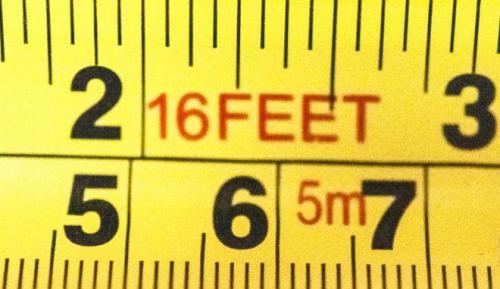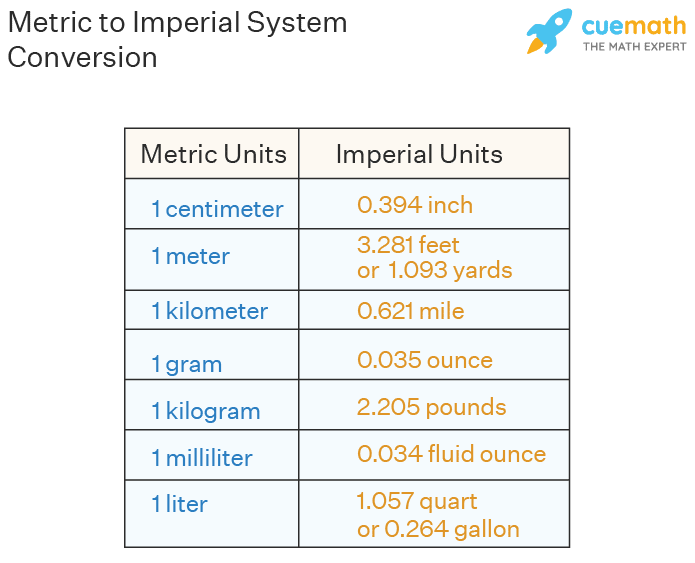
Ever since people started building complicated things, they realized that there was a need for a measurement system . Originally the basis was the human body.
The Egyptians used cubits that were about 52,4 centimeters , but because not all cubits were the same, measuring rods appeared.
The Roman Empire used the measure pes ( foot - it's what you mean, regardless of whether all feet were the same), which was divided into 12 unciae ( inches - the width of an adult's thumb). The pound was another measure that had a wide influence on European weight and currency, after the Roman era.
In medieval Europe each region had its own laws of weights and measures - set by the trade guilds. Research revealed that during the same period, in one country, the measurement of the 'foot' had 37 variations.
There were 83 different ways of measuring wheat, 68 for wine, and 70 for liquids. Something similar was happening all over the world. And it was a problem, as the need for an international system - for the sake of trade - was becoming enormous.
Revolutionary France was to produce what evolved into the definitive International System of Units.
The first ever implemented is metric - which is the dominant one today, but not fully followed by all countries and sectors. The idea was proposed by the French vicar Gabriel Mouton who created it in 1670, to unify the way figures were calculated.
His focused on the swing length of a pendulum. Defined the measurement of powers of 10 (see decimal numbers). That is, 10 centimeters was 1 decimeter, 10 decimeters was one meter and so on. Which made the system much simpler than it was back then.
In 1790, the French Academy of Sciences formed a committee to fully devise a rational system of measurements. "Measure" was defined as 1/1000th of a minute of arc of latitude (see Earth's circumference between the North Pole and the Equator - passing through Paris). That is, about 1852 meters.
The meter became the unit of length, the kilogram the unit of mass, and the second the unit of time. According to Mouton's proposal, instead of having different names for each unit of length, they would have prefixes.
Today, this system is also referred to as the Système International (International System of Units).
After its creation, it was adopted by other European countries. Excluding Great Britain.
She had other plans. To be precise, the imperial (or Anglo-Saxon) system.

The imperial system was defined as “a system of measurement used in the United Kingdom and other Commonwealth countries consisting of units such as the inch, mile and pound ”.
It was used by Great Britain from 1824 to 1965 to stop confusion with the many local measurement systems during the time (from the 16th to the 19th century) when the British Empire ruled various parts of the world.
Among them the USA. It was among the countries that signed the Treaty of the Meter in 1875, which has since been celebrated every May 20 as World Metrology Day.
After their independence, the government decided to keep the type of measurement (which was more or less common to all regions - so there was no confusion), even though the trend of the time was the metric system. It was renamed the United States Customary System (USCS) and is currently used by the US, Liberia, and Myanmar (the latter two have begun to partially adopt metric since 2013).
The Metric Conversion Act was signed into law on 12/23/1975 by President Gerald Ford. He affirmed differentiation, with the consequence that it was judged as more important - than integration -, given that Americans (who are also somewhat nationalist - and therefore love what is theirs that is not similar to what everyone else has) they did not seem particularly willing to spend time adapting to the new data.
Note : without saying it, the USA uses the metric system - for example in the researches that scientists do, because the native system does not help them in their work, due to the lack of precision. By law (1992), companies that deal with consumer goods also follow the metric system (hence the can of Coca Cola has ounces and milliliters).
While the main difference between the metric system and the imperial system is the type of units used, there are a few other key differences. Such as; Metric units are easily converted by multiplying or dividing by powers of 10, while there is no direct way to convert imperial units.
Characteristics
In addition to distances, masses and weight, in the metric system there is also the measurement of the temperature scale in degrees Celsius. Americans have Fahrenheit. The Celsius scale has been used around the world since the mid-20th century, with the US being the exception to this rule. As they say Fahrenheit climates measure the temperature of the air and not the water, which is what the Celsius scale does.
Great Britain committed to adopting the metric system in 1965, but still uses imperial units in many places, especially on roads. Ireland does something similar. In both cases, a glass of draft beer was, is and will be a pint.
Malaysia has the metric system, but also uses its own measurements in places like traditional markets.
Canada has imperial units in places (thanks in part to its proximity to the US), North Korea has its own system, and non-metric units exist in Thailand, China, Indonesia, Taiwan—among other countries.
(SOURCE: https://www.news247.gr - the International and the Imperial measurement systems)
“The use of two different unit systems was the cause of the loss of the Mars Climate Orbiter in 1998. NASA specified metric units in the contract. NASA and other organizations applied metric units in their work, but one subcontractor, Lockheed Martin, provided thruster performance data to the team in pound force seconds ainstead of newton seconds. The spacecraft was intended to orbit Mars at about 150 kilometers (93 mi) altitude, but incorrect data probably caused it to descend instead to about 57 kilometers (35 mi), burning up in the Martian atmosphere.” – Wikipedia
Metric System vs. Imperial System: Differences and Use
Imperial and US customary measurement systems (WIKIPEDIA)
What is the Imperial System? Measurement and Maths (Wiki)
The International Measurement System and the Imperial Measurement System
Abbreviations used in Nautical Charts
Symbols, Abbreviations and Terms used on Paper and Electronic Navigational Charts




Find all top providers of Marine Navigation products & services for safe Maritime Voyage Planning